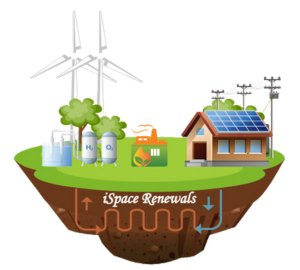Geothermal power plants use heat from deep inside the Earth to generate steam to make electricity. In order to obtain enough energy to generate electricity, geothermal power plants rely on heat that exists a few kilometers below the surface of the Earth. In some areas, the heat can naturally exist underground as pockets steam or hot water. However, most areas need to be “enhanced” with injected water to create steam.
Comparing the benefits of geothermal energy with other renewable energy sources, the main advantage of geothermal energy is that its base load is available 24 hours per day, 7 days per week, whereas solar and wind are available only about one-third of the time.
Geothermal is the fifth major renewable energy source in terms of electricity generation in the world. It is the heat energy trapped underneath the earth’s crust from the time of its formation due to radioactive decay.
